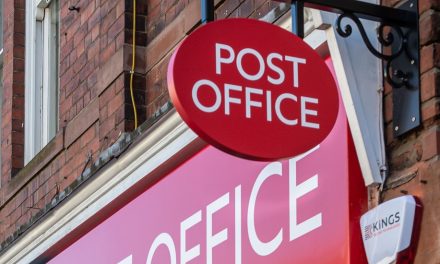
“UK online delivery and click-and-collect to double by 2025,” claims new report
The UK market for click-and-collect and home delivery of online purchases is set to double in size by 2025, according to new research from OC&C Strategy Consultants. The research also suggested that 40% of non-food sales in the UK will be made online by 2025.
With the overall retail market expected to grow by a relatively modest 2.2% (from £189bn in 2015 to £230bn in 2025), OC&C Strategy Consultants expects that “the increase in delivery and click-and-collect will come primarily at the expense of in-store sales”.
To illustrate the “seismic shift” in the market, OC&C Strategy Consultants offered these statistics:
- In 2005, only 9% of retail sales (£15bn) were fulfilled through home delivery and less than 1% by click-and-collect. The remaining 91% (£152bn) of sales were made in store.
- In 2015, 19% (£35.9bn) of sales were made through delivery, 3% (£5.6bn) were made though click-and-collect, and 78% (£147.4bn) in store.
- By 2025, home delivery is expected to be responsible for 30% (£69bn) of sales and click-and-collect for 10% (£23bn), whilst in-store purchases will decline to 60% (£138bn).
And while UK consumers are switching onto e-commerce because of its perceived speed and convenience, they are also demanding that the delivery process should become faster and easier too.
“Between 2013 and 2015,” said OC&C Strategy Consultants, “the proportion of shoppers opting for next-day delivery grew by 50%. However, over the same time period, the proportion of those willing to wait 3-5 days for their parcel to arrive dropped by 10%.”
Commenting on the findings, Anita Balchandani, Partner and Head of Retail at OC&C Strategy Consultants, said: “When six in ten shoppers abandoning baskets online are doing so because of issues relating to the last mile, it’s clear that investing only in the front end of e-commerce is no longer sufficient.
“The last mile is fast becoming the ultimate battleground for retailers as shoppers demand more convenience.
“Being able to offer predictable delivery slots, free next-day delivery and an accessibly priced same-day service is becoming the norm. The challenge retailers face is how to meet these changing expectations while making the economics work for their business.”
The pressure to meet these expectations is squeezing retailers’ margins.
“When it comes to variable costs to fulfil, click-and-collect costs retailers four times more than in-store purchases,” said OC&C. “Similarly, home delivery of small or large parcels can be anywhere between 5 and 23 times more expensive respectively than in-store purchases for retailers. Yet customers’ propensity to match these costs is not aligned. For instance, in order for same-day delivery to become mainstream, the research revealed that the maximum shoppers are willing to pay for it is £4 or less.
“As a result of the changing retail environment, average operating profit margins for the UK’s top-10 multichannel retailers have more than halved since 2011, from 6% in 2011 to 2.5% in 2015. To add to the profit pressures being faced by multichannel retailers, the shift in the last mile landscape could adversely impact retailers’ margins by an additional 1.5%.”
Balchandani had some suggestions on how to tackle this crucial last-mile challenge: “Firstly, retailers should start to rethink activities like warehousing, picking & packing and delivery in order to make them more cost effective. The latter, for instance, accounts for as much as 60% of last mile spend. There are a number of ways retailers can do this – for example, shipping from stores which are closer to customers’ homes, improving the drop density of each driver in particular areas, or using more flexible labour models.
“Secondly, retailers should start considering mutually beneficial partnerships that will help them fulfil the last mile, and do it in a way that is faster and less capital intensive. Here, the UK can take inspiration from retailers around the world. In the US, for example, Uniqlo partnered with 7-Eleven to offer click-and-collect from their stores. This meant customers could collect their purchases around the clock, while giving 7-Eleven access to more customers. Alibaba’s partnership with Suning in China has meant that Alibaba is now able to deliver to all districts, which it previously wasn’t able to do.
“And finally, our research shows that it is possible for retailers to fight back with stores too. Consumers suggested they could be persuaded away from buying online if items they wanted were available locally, if they could check stock was available online in advance, and if items were easy to find.”












